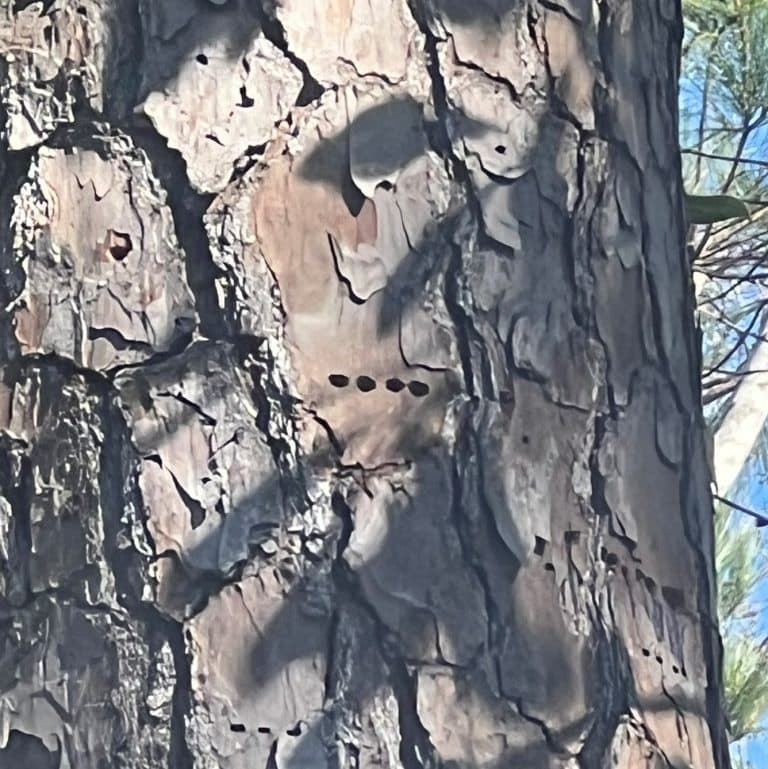Yellow-bellied Sapsuckers are one of the more interesting of our North American woodpeckers. As their name implies, they do have yellow belly feathers and they do eat sap from trees. But that is only part of their story and the impact that their sap wells have on many other creatures.
Of the eight common woodpeckers of the eastern U.S., Sapsuckers are completely migratory, moving from their breeding grounds in southern Canada and the northern U.S. to wintering grounds across the southern U.S. and Mexico. They are a winter bird for us, but the wells that they drill in trees stay with us year-round and can feed many.
Along with the sap that these woodpeckers glean from their neat rows of sap wells, these industrious birds also feed on the living cambium tissue that lies just below the bark. They also feast on insects that are attracted to the oozing sap. It is not uncommon to spot rows of two types of wells – deep conical wells and shallow rectangular wells that produce larger quantities of sap.

Sapsuckers are reported to drill wells on over 1,000 species of trees including hardwoods and some conifers, like the large pines in my yard. But their wells feed more than just themselves. In the northern parts of their range, hummingbirds are reported to depend on the sap from active Sapsucker wells during migration. In Sapsucker wintering grounds, other birds may also visit these wells to feed on insects.
It was this interaction between species of birds that attracted the attention of local birders and bird watchers a few years ago when a rare western Painted Redstart was spotted in winter along the coast, that was doing just that. Painted Redstarts are insect-eating birds that are native to parts of the southwestern U.S., but on occasion find their way east in winter. That Redstart hung out with a Yellow-Bellied Sapsucker for weeks, helping itself to insects in the trees and those attracted to the sapsucker wells. Smart bird!
But the sap from these wells also supports many other creatures, including squirrels, bats, and many types of insects like bees, wasps, butterflies, and moths. I have watched the wells on a Live Oak tree in my friend’s yard attract several of these types of insects in early spring when many are emerging from their winter slumber, like Question Mark Butterflies that overwinter as adults. I suspect insect-eating birds take advantage of the parade of prey located conveniently on a single tree.
In this way, Sapsuckers are somewhat of a keystone species in the forests they frequent, creating opportunities for more than just themselves. Like the Redstart, following a Sapsucker around has its benefits and may become a useful habit.
So, we should thank the Yellow-bellied Sapsuckers that visit us each winter. They help support many other creatures in our world through the wells that they drill in our trees. In many ways, those wells are signs of a healthy ecosystem. And for the OCD among us, are in nice neat rows that add character to the trees they grace.
Hope to see you in our great outdoors!
Photos of Yellow-bellied Sapsucker and Painted Redstart courtesy of Sharon Milligan. All others by Mark W. LaSalle